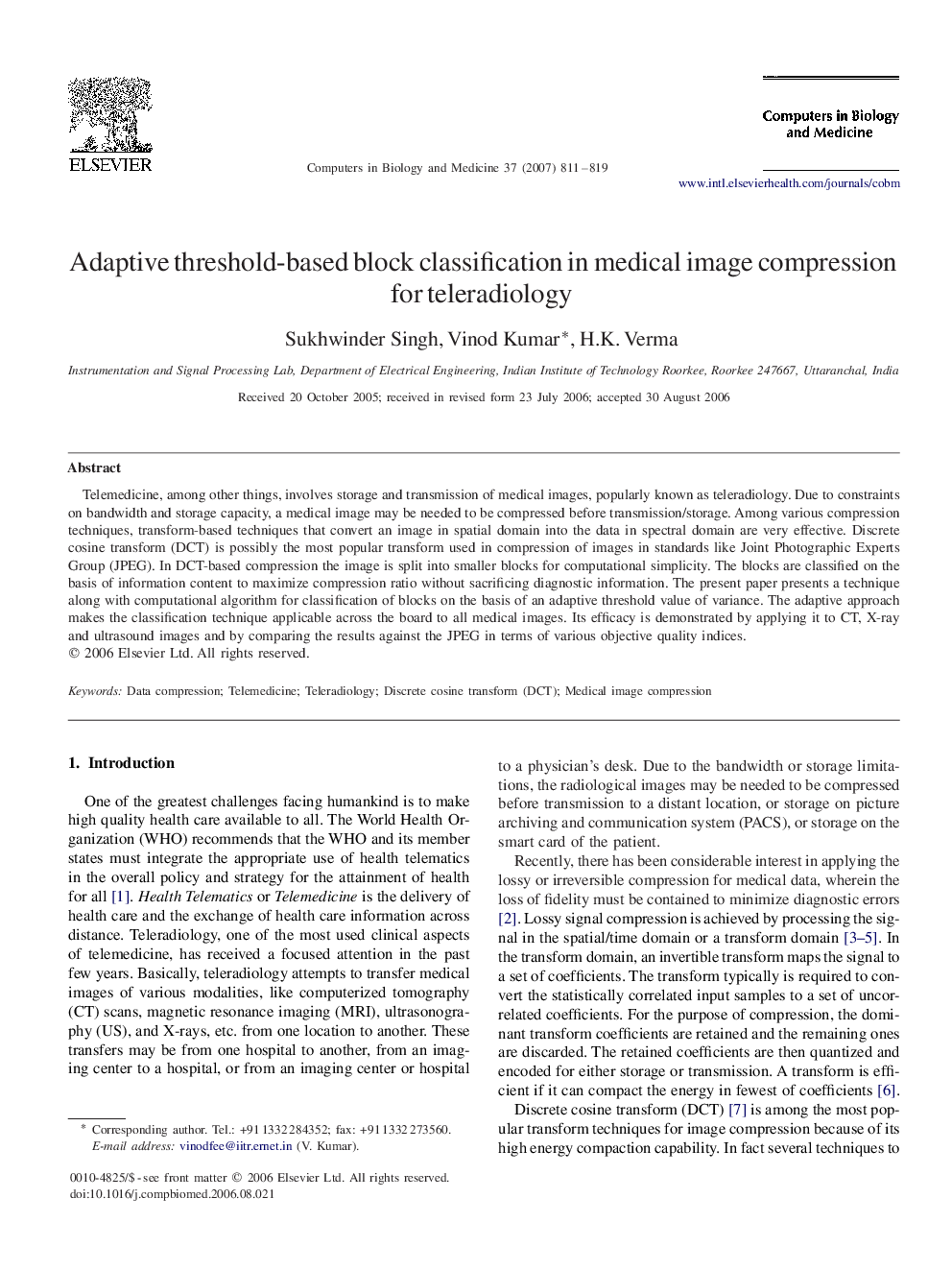| Article ID | Journal | Published Year | Pages | File Type |
|---|---|---|---|---|
| 505906 | Computers in Biology and Medicine | 2007 | 9 Pages |
Telemedicine, among other things, involves storage and transmission of medical images, popularly known as teleradiology. Due to constraints on bandwidth and storage capacity, a medical image may be needed to be compressed before transmission/storage. Among various compression techniques, transform-based techniques that convert an image in spatial domain into the data in spectral domain are very effective. Discrete cosine transform (DCT) is possibly the most popular transform used in compression of images in standards like Joint Photographic Experts Group (JPEG). In DCT-based compression the image is split into smaller blocks for computational simplicity. The blocks are classified on the basis of information content to maximize compression ratio without sacrificing diagnostic information. The present paper presents a technique along with computational algorithm for classification of blocks on the basis of an adaptive threshold value of variance. The adaptive approach makes the classification technique applicable across the board to all medical images. Its efficacy is demonstrated by applying it to CT, X-ray and ultrasound images and by comparing the results against the JPEG in terms of various objective quality indices.
